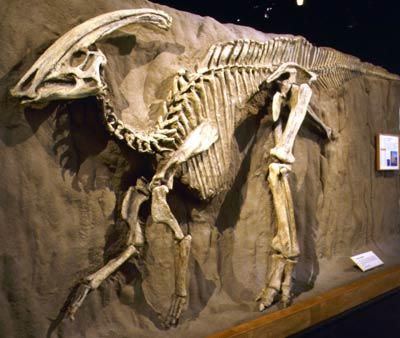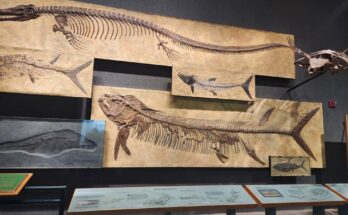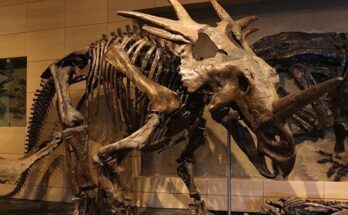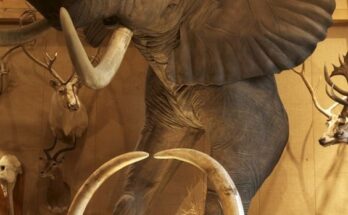Echoes from the Cretaceous: Exploring the Anatomy and Mysteries of Parasaurolophus
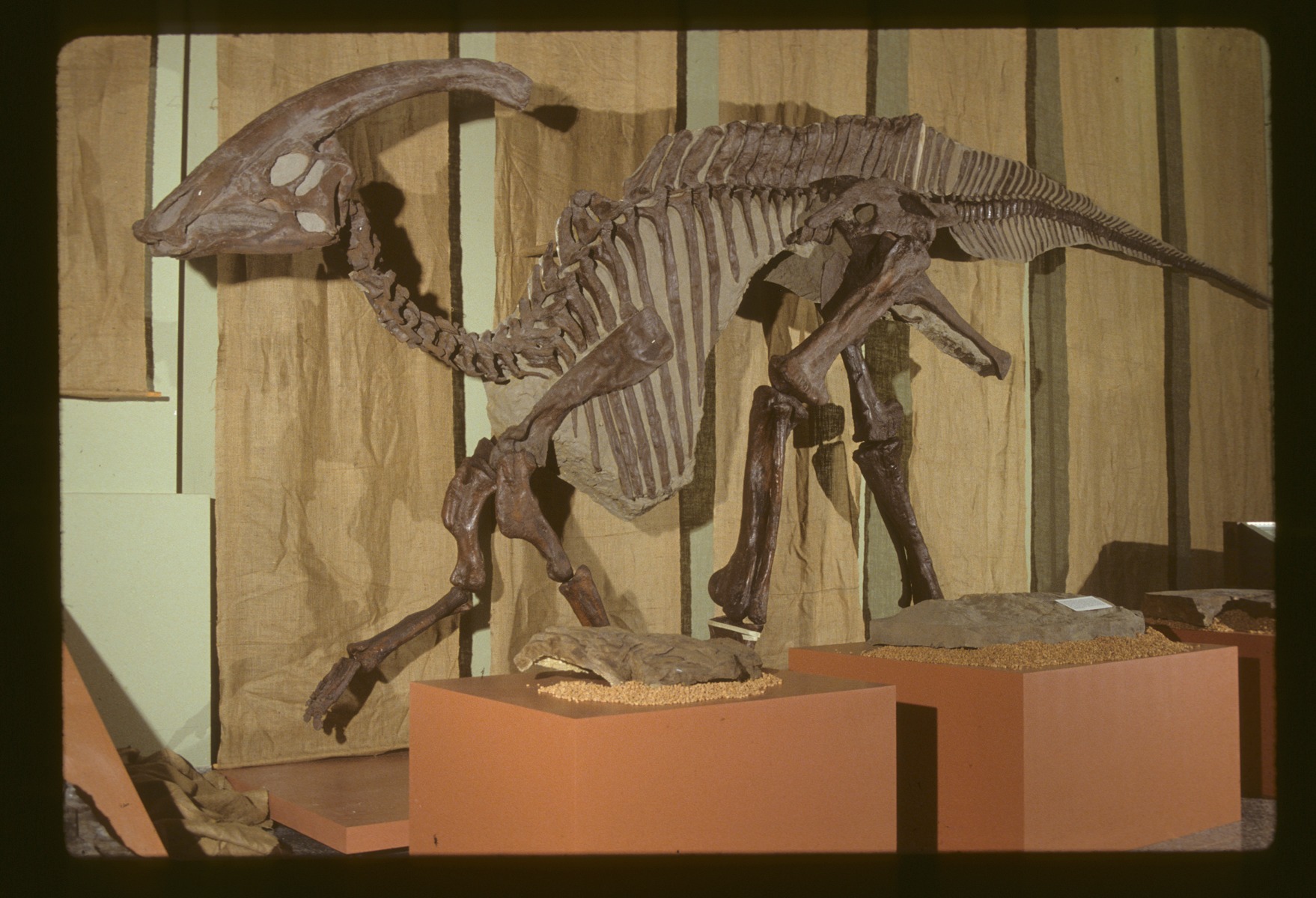
Introduction to Parasaurolophus: The Crested Ornithopod
Paleontology offers a window into Earth’s ancient ecosystems, and few dinosaurs captivate the imagination like Parasaurolophus, often dubbed the “trumpet lizard” for its distinctive cranial crest. This Late Cretaceous herbivore, roaming what is now North America approximately 76 to 73 million years ago, exemplifies the bizarre adaptations of hadrosaurids—or duck-billed dinosaurs. In this tutorial-style guide, we’ll dissect the anatomy of Parasaurolophus using a classic museum-mounted skeleton as our focal point, exploring its discovery, skeletal features, potential behaviors, and evolutionary significance. Whether you’re a student, educator, or enthusiast, this post will equip you with the tools to analyze similar fossils, interpret paleobiological data, and appreciate the science behind reconstructing prehistoric life.
Parasaurolophus belongs to the Lambeosaurinae subfamily of hadrosaurids, known for elaborate cranial crests. The genus includes species like P. walkeri, P. tubicen, and P. cyrtocristatus, each varying slightly in crest shape and size. Fossils have been unearthed primarily from the Dinosaur Park Formation in Alberta, Canada, and the Kaiparowits Formation in Utah, USA, painting a picture of a semi-aquatic, herd-living dinosaur in lush floodplains. By following the steps outlined here, you’ll learn to identify key anatomical traits, evaluate functional hypotheses, and even simulate basic paleontological analyses using accessible tools.

Analyzing the Museum Exhibit: A Visual Breakdown of the Skeleton
Museum displays, such as those at the Field Museum of Natural History or the Royal Ontario Museum, often feature Parasaurolophus skeletons mounted in dynamic poses to evoke their living gait. The specimen in question—a near-complete articulated skeleton embedded in a simulated rock matrix—showcases the dinosaur in a quadrupedal stance, with its elongated tail, robust limbs, and iconic backward-curving crest prominently displayed. This mount, likely representing P. walkeri or a similar species, measures around 9-10 meters in length, with the skull alone spanning up to 2 meters including the crest.
Step 1: Observing Overall Posture and Proportions
Begin your analysis by assessing the skeleton’s posture. Parasaurolophus was facultatively bipedal, meaning it could switch between two and four legs depending on speed or terrain. In the exhibit, the forelimbs are positioned to support weight, with the hindlimbs longer and more muscular, indicating a primary quadrupedal mode for foraging. Measure proportions virtually or in-person: The tail comprises about half the body length, providing counterbalance, while the neck curves gracefully to position the head for low browsing. Tutorial tip: Use a ruler or digital caliper app on photos to calculate ratios, such as hindlimb to forelimb length (typically 1.5:1), to infer locomotor habits.
Step 2: Examining the Vertebral Column and Ribcage
Trace the backbone from skull to tail. The cervical vertebrae (neck bones) are elongated, supporting a flexible neck for reaching vegetation. Dorsal vertebrae feature tall neural spines, forming a subtle “sail” along the back, possibly for thermoregulation or display. The ribcage is barrel-shaped, enclosing a large gut for fermenting plant matter—evidence of a herbivorous diet. Count the vertebrae: Approximately 15 cervicals, 18 dorsals, 6 sacrals, and 45+ caudals. In a tutorial setting, compare this to other hadrosaurids using online databases like Paleobiology Database to highlight evolutionary convergences.
Step 3: Detailing the Limbs and Pelvis
Focus on the appendages. The hindlimbs are robust, with a three-toed pes (foot) adapted for weight-bearing and speed bursts up to 40 km/h. The femur is straight and pillar-like, while the tibia and fibula are slender. Forelimbs end in four digits, with the outer ones reduced—suggesting limited grasping but useful for stability. The pelvis is wide and bird-like, with a pubis bone pointing backward, a hallmark of ornithischians. Practical exercise: Sketch the limb bones and label joints (e.g., acetabulum for hip socket) to understand biomechanics; software like Blender can model movements for deeper insight.

The Iconic Crest: Structure, Function, and Hypotheses
No discussion of Parasaurolophus is complete without its defining feature: the elongated, tubular crest protruding from the skull.
Step 4: Dissecting Crest Morphology
The crest, formed by extensions of the premaxilla and nasal bones, curves backward in a U-shape, reaching lengths of 1.6-1.8 meters in adults—longer than the rest of the skull. It’s hollow, with internal chambers connected to the nasal passages, starting from the nostrils and looping back. In juveniles, like the famous “Joe” specimen discovered by a high school student in 2009, the crest begins as a small bump, growing dramatically through ontogeny. Analyze cross-sections (available in studies) to note the U-shaped tube’s path, which could amplify sounds.
Step 5: Testing Functional Theories
Hypotheses for the crest include sound production, display, thermoregulation, or head-butting. The resonant chamber theory posits it acted like a trombone, producing low-frequency calls for communication in herds—simulations show frequencies around 30-100 Hz. Display functions suggest sexual selection, with crests varying by species for mate attraction. Tutorial: Use audio software like Audacity to model resonances based on crest dimensions (volume ≈ 1-2 liters); compare to modern analogs like elephant trunks.
Recent studies of pathologies, such as lesions on specimens like ROM 768, indicate injuries from falls or intra-species combat, but not primarily from crest use.

Scientific Background: Discovery and Research Timeline
Parasaurolophus was first described in 1922 by William Parks from a skull found in Alberta’s Red Deer River. Subsequent finds, including the 2013 “Joe” baby skeleton, have filled gaps in ontogeny.
Step 6: Tracing Fossil Excavation and Preparation
Fossils are excavated using chisels and brushes, then jacketed in plaster for transport. In labs, CT scans reveal internal structures—like the crest’s airways—without damage. Replicate this: Download free 3D models from MorphoSource and use MeshLab to virtually section the crest.
Step 7: Integrating Histological and Isotopic Data
Bone histology shows rapid growth rings, indicating maturity in 5-7 years. Stable isotopes in teeth suggest a diet of conifers and ferns in seasonal environments. Advanced tutorial: Analyze thin sections under a microscope to count Lines of Arrested Growth (LAGs), estimating age at death.
Paleobiological Implications: Behavior and Extinction
Parasaurolophus likely lived in herds, using crests for vocal signaling to coordinate or warn of predators like Tyrannosaurus. Its duck-bill facilitated stripping leaves, with hundreds of self-sharpening teeth.
Step 8: Reconstructing Paleoecology
Map finds on geologic timelines: All from Campanian stage, pre-K-Pg extinction. Simulate habitats using GIS tools with data from formations, incorporating flora like cycads.
Conclusion: Lessons from a Prehistoric Symphony
The Parasaurolophus skeleton embodies the ingenuity of evolution, transforming a simple nasal passage into a multifaceted adaptation. By mastering these analytical steps—from postural assessment to functional modeling—you’ll gain a deeper appreciation for dinosaur paleontology. Visit museums like the Philip J. Currie Dinosaur Museum for immersive experiences, or explore virtual reconstructions online. This knowledge not only revives ancient worlds but inspires ongoing research into biodiversity and adaptation.
